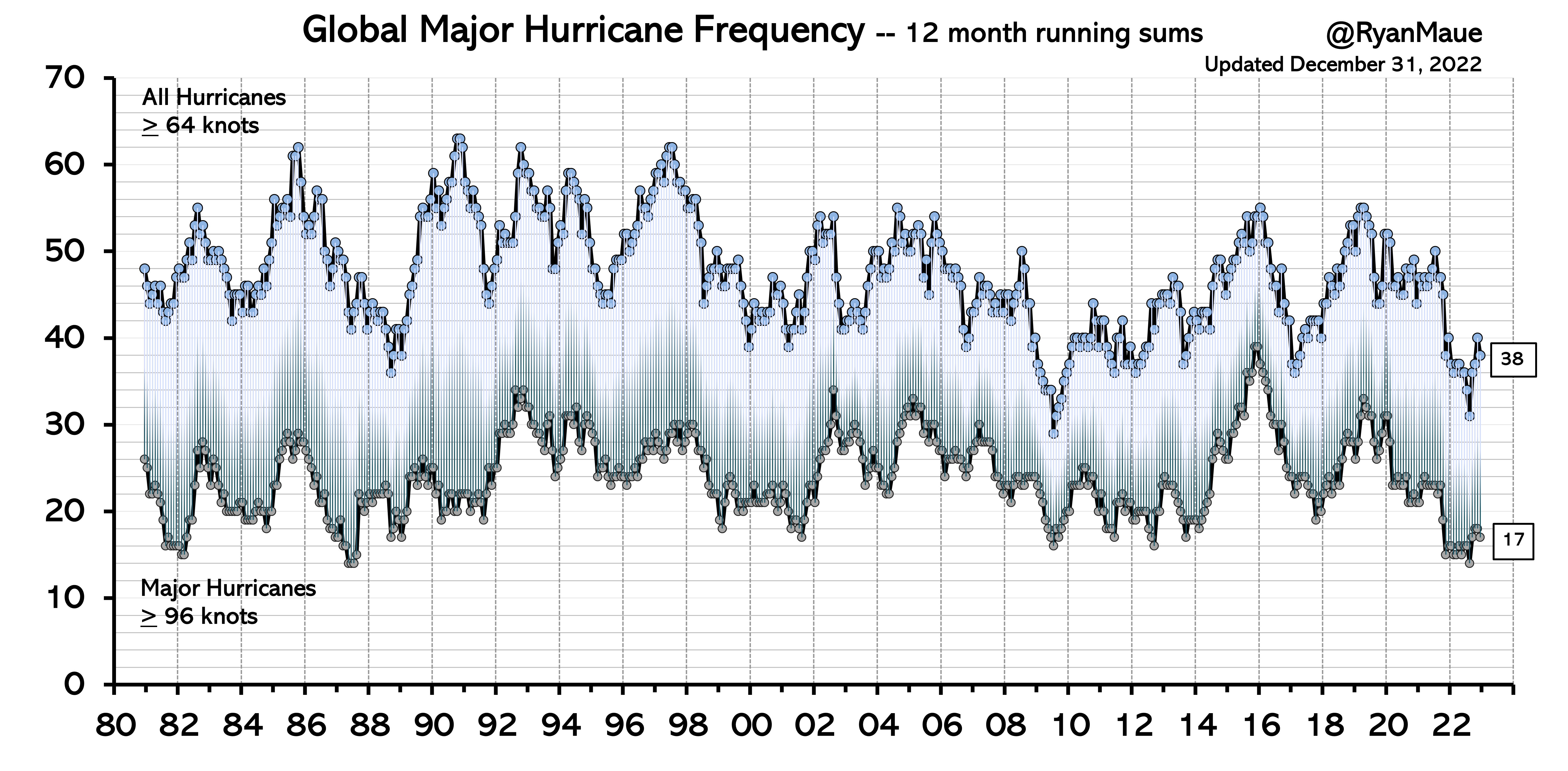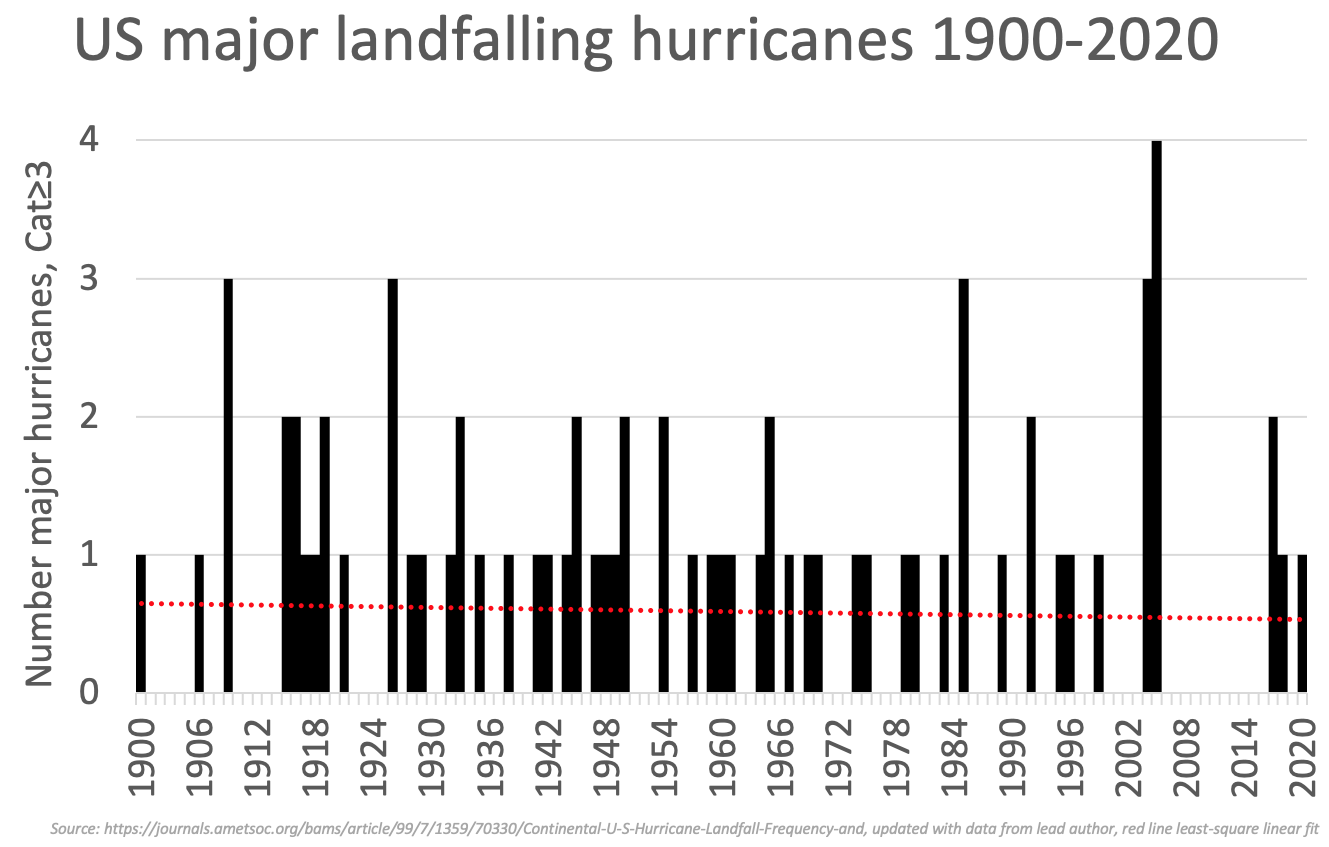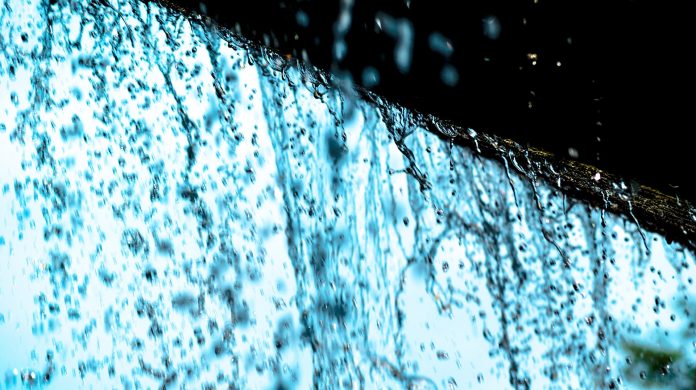A recent article at Phys.org, originally published by the Chicago Tribune, says that climate change is behind the recent atmospheric river events in California, as well as an alleged increase in Category 4 and 5 hurricanes. This is false. Atmospheric rivers are a natural part of the West coast’s climate, and neither historic data, nor recent trend data, indicate that the frequency or severity of those events are increasing. Likewise, there has been no increase in major hurricanes over the past hundred years of global warming.
In “Climate change is fueling extreme weather. How do we make a difference?,” writer Barbara Willard makes several false claims regarding climate change and extreme weather, the most immediately egregious being that recent atmospheric rivers are being fueled by climate change, and that deadly hurricanes are becoming more common. Single weather events, or even seasons of bad weather, can’t be used to measure climate change, which is measured as at least a 30-year trend of regional weather.
Willard gives credit to “extreme event attribution” science by the National Academy of Sciences for promoting the narrative that weather is worsened by climate change, but she misses the reason why this is a poor scientific standard. Attribution scientists begin with the assumption that carbon dioxide has a significant impact on climate, and that the modest warming of the past hundred-plus years is fueling, at least in part, extreme weather. It is an paradigm example of confirmation bias. They run multiple computer models, some that are fictional recreations of what they assume the climate might like be if humans didn’t exist on the planet, and some scenarios including humans but based on flawed emissions and temperature assumptions.
The misleading nature of attribution science has been pointed out multiple times at Climate Realism, for example, here, here, and here, as the accuracy of a computer models are only as accurate as the input of data and the assumptions concerning interactions and feedback mechanisms built into the models. None of these models have been confirmed to accurately portray recorded climate conditions. Since we can’t tap into a parallel universe where a storm was more or less extreme, there is inherent uncertainty, that makes these kinds of computer models interesting from a theoretical perspective, but not much more.
Real world weather data is available and improving, so the prognostications of attribution modelers can be checked over time. So far, when actual data is compared to computer models projections, the evidence undermines the “climate catastrophe” theory.
Regarding atmospheric rivers, Willard says climate change “fueled” the recent “precipitation episodes” in California. However, even scientists and publications who normally support alarmist messaging have admitted that recent California weather is not historically unusual. A senior hydrologist for the National Weather Service in Los Angeles told a Los Angeles Times writer that the recent atmospheric river events were “nothing as big as what we’ve gone through before.”
Indeed, there is a long history, both recorded by humans and indicated by paleontological proxy data, of major swings between drought and deluge in California. Willard writes that there is “broad scientific consensus that climate change increases water vapor in the atmosphere,” but recent studies have found no evidence of this occurring in the regions where west coast atmospheric rivers originate.
As for hurricanes, Willard’s claims are easily refuted with the most recent hurricane data. Major hurricanes, or those ranked as a Category 3 and above, have seen no increase over the past decades, and the past year has seen some of the lowest major hurricane counts since the 1980s. (See figure below)

As discussed in Climate at a Glance: Hurricanes, the IPCC claims only low confidence “for the attribution of any detectable changes in tropical cyclone activity to anthropogenic influences.” As recently as 2017 saw the end of the longest period without a major hurricane landfall in the United States in recorded history, a nearly 12-year period with no major hurricanes. The gap is seen in the figure below, showing major landfalling hurricanes in the United States through 2020.

2022 ended with the weakest storm levels in 42 years, despite predictions of an extreme hurricane season early on, as discussed in detail, here.
Willard ends the article with a call to climate action, including personal lifestyle changes like vegetarianism and traveling less, as well as political lobbying and proselytizing to your community. What she neglected, however, is looking into weather data and fact-checking political sources of climate alarm. When even the most basic research is conducted, climate change ceases to look so catastrophic.
















Noting that Hollywood Celeberty Robert Redford claimed Fossil Fuels a re Cooking the Earth(Lie)while he has done ads for United Airlines Its Time to Fly